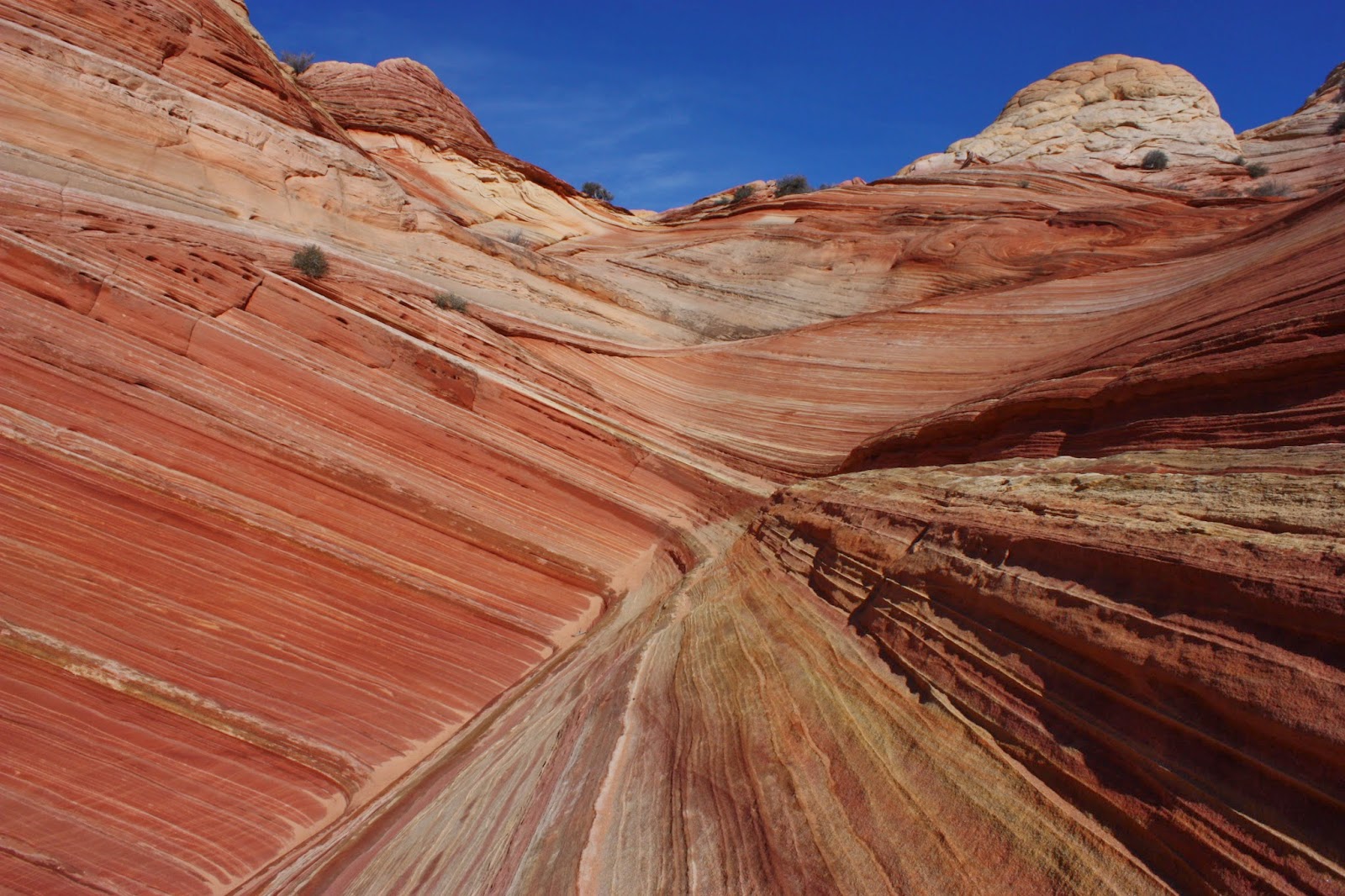There are several high points in the state of Utah nicknamed "Mollies Nipple" (according to some sources, as many as 11.) Growing up, the one I was most familiar with is near Hurricane, Utah, which I climbed with some friends several years ago (this is also the Mollies Nipple that most closely resembles its name, as far as I've observed.)
Another Mollies Nipple lies about 30 miles northeast of Kanab, and is easily visible in areas along I-80 between Kanab and Page, Arizona. This Mollies Nipple is the most well-recognized landmark on the west side of the Grand Staircase-Escalante National Monument.
To get there, look for a northbound unsigned dirt road 26.5 miles east of Kanab. At 9.1 miles, you pass through a gate, and at 10 miles, there is a junction, in which you bear right towards Nipple Ranch, Mollies Nipple, and Starlight Ridge. There is another gate immediately beyond this junction. Continue 1.3 miles past this junction where a sandy double track branches right. After about 100 yards there will be a place to park. The last section of this road can be quite sandy and high clearance 4 WD is recommended.
The sandy double track continues beyond where you park, but it gets progressively sandy and is probably only passable to ATV's.
After parking, I looked around and noticed Mollies Nipple looming in the distance, seemingly forever away. I knew I'd have my work cut out for me.
I had about four miles ahead of me before reaching the base of Mollies Nipple - not overly daunting in itself, but when you consider the vast majority is across a sandy double track, the trek becomes significantly more draining.
The track meandered through pinyon and juniper, occasionally coming to crests where views of the peak and beyond were tough to ignore.
The views were spectacular, and I knew they'd be even better if I was able to ascend the nipple. However, a seed of doubt was planted in my mind as the wind began to pick up. I wasn't sure how sketchy the ascent would be as is...let alone with gusty winds.
Still, I had a lot of trudging to go before having to worry about that.
For a while, I tried not looking up at Mollies Nipple, since it didn't seem to be getting closer anytime soon. Maybe if I looked up every 20 minutes, I'd feel like more progress was being made.
Maybe that theory worked, since before I knew it, Mollies Nipple appeared to be just in front of me. It couldn't be long now!
The closer I got, the less "nipple-like" it appeared. From the angle I was approaching it, it looked more like a fin.
At this point, it wasn't long before I was directly beneath it. I found a shaded spot at the base to hydrate and refuel before starting the ascent. Despite my rubbery legs from the sandy trek, and the continuing wind gusts, I decided there was no way I would turn back without at least a summit attempt. 700 feet to go (half of the hike's total elevation gain), and straight up...
I picked a route from the bottom that appeared easiest, and started my ascent. I don't think there was a single rock on the entire slope that was stable, so each step was somewhat of a challenge. The higher I got, the more challenging it became. What began as a hike across loose sandstone soon became a scramble. I considered turning back once, but when I looked down, I told myself that I'd come too far not to continue.
As I neared the top, I realized that I was past most of the loose stuff, but the steepest part was still to come. I began a hand-over-hand scramble for the last bit. It was a bit nerving, but at least the terrain was more solid. (My guidebook describes the scramble as class 2 and 3 with one class 4 section, although in my opinion it's debatable whether that 4 classification is justified. I, however, am no expert.)
Finally, I hoisted myself up the last section, and was able to see the other side. It wasn't the "true" summit - I was in a saddle between a couple of points that were just a few feet above me. Since I didn't see a safe way of getting to either of them, I was perfectly content with where I was. As for the views...let's just say they didn't disappoint. How could they?
A look down the opposite side from where I ascended:
I didn't hang out up here for too long, as I only had a small area to stand with quite a steep drop on the opposite side. After soaking in the views one last time, I started my descent.
Here's a look back towards the top as I started my way down:
Another look up, a while later:
Cool rock formation near the base:
When I finally reached flat ground again, I was simultaneously overcome with a sense of relief and accomplishment.
Of course, I still had that pesky four-mile sandy hike back to my car. Besides being scared half to death by a cow, it was a relatively stress-free and uneventful return. When back at the car, my legs were thankful!
I was sure to catch one last glimpse of Mollies Nipple near the trailhead, with the sandy double track leading off to the right.
It was a beautiful November day in the desert, and besides the wind, the weather couldn't have been better. To this day, I look back on my hike up Mollies Nipple as one of my best day hike accomplishments. For anyone looking for a true challenge to mix things up in canyon country, I highly recommend checking out Mollies Nipple.

















































